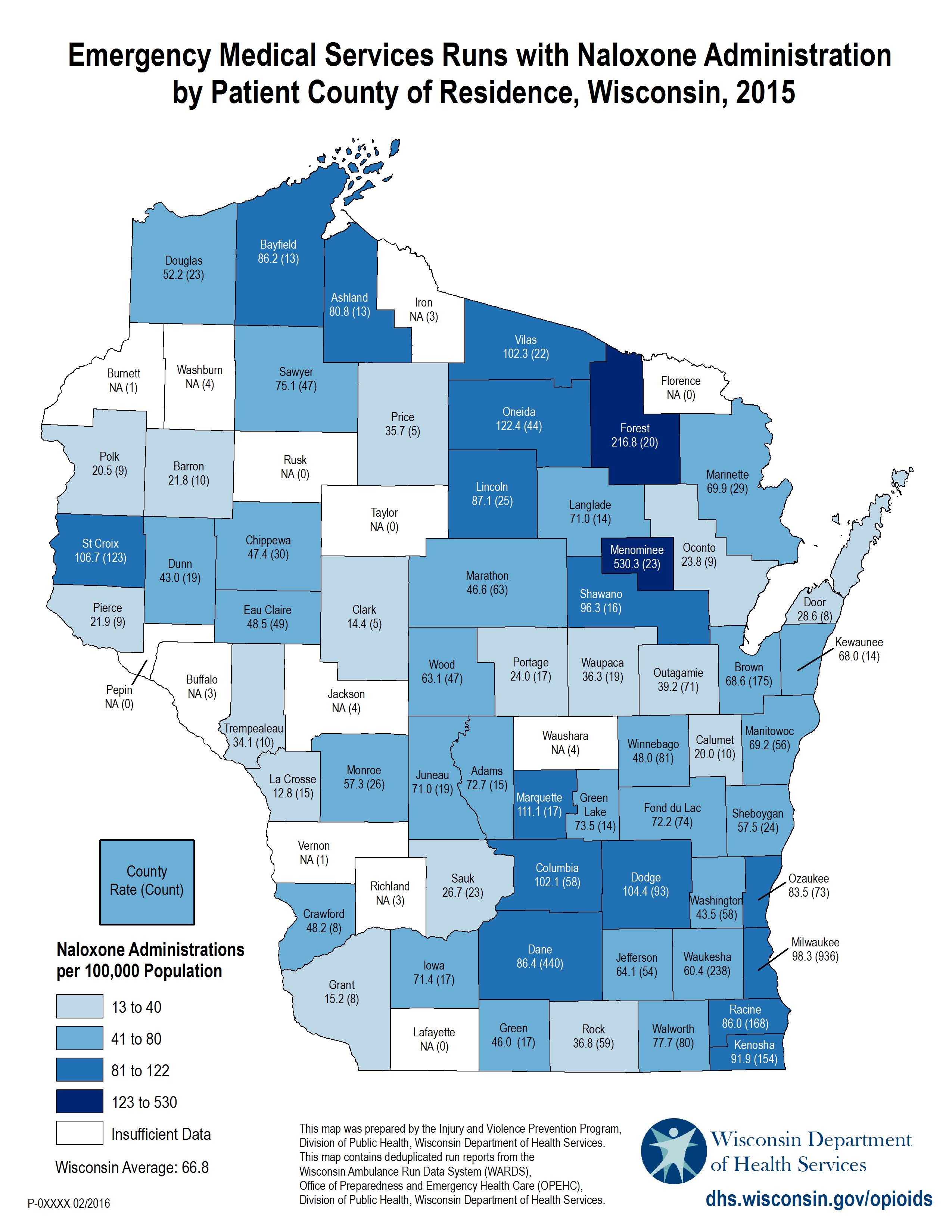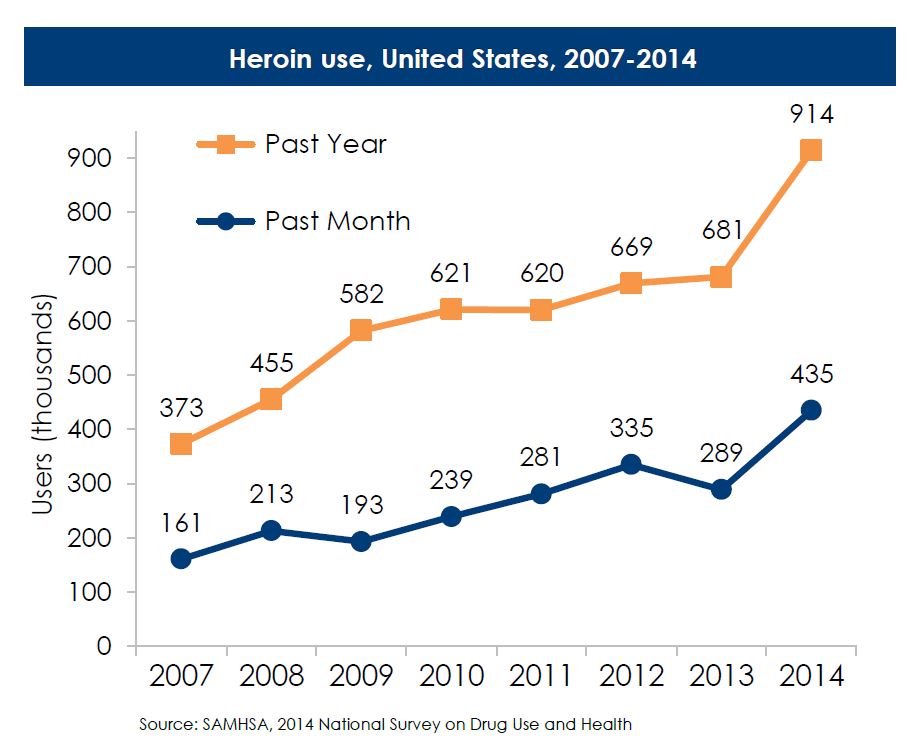
According to the 2014 National Survey on Drug Use and Health, an estimated 435,000 people in the United States - 0.14% of the population aged 12 years and older inject, smoke, or snort heroin regularly ("in the past month").
Based on this proportion, an estimated 6,600 regular heroin users live in Wisconsin. Nationwide, past year heroin use increased 34% from 2012 to 2014, while past month use increased 50% over the same period.
Accordingly, the number of regular users in the US more than doubled between 2008 and 2014. Among people between 12 and 49 years old, the average age of first use was 28 (US).
Although heroin is perceived by teenagers as the most dangerous drug, the share of 12 to 17-year-olds who perceive the drug as very risky has declined slightly since 2002, according to the results of a 2013 survey by the U.S. Department of Health and Human Services. Teens also say it is the most difficult to obtain with the share of teens saying heroin is fairly or very easy to obtain declining from 15.8 percent in 2002 to 9.1 percent in 2013.
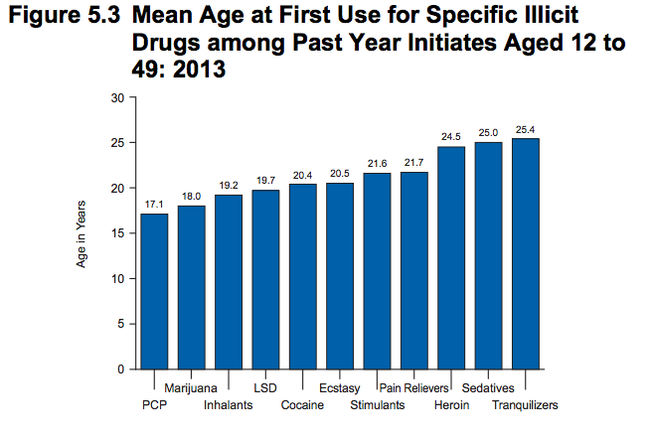
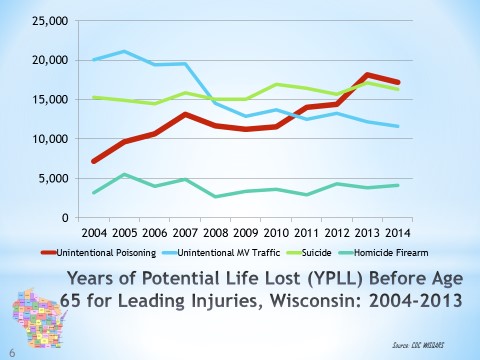
Heroin abuse is tightly tied to prescription drug abuse. Almost half of people addicted to heroin are also addicted to painkillers. People are 40 times more likely to be addicted to heroin if they are addicted to prescription painkillers. Abuse of prescription painkillers is incredibly common — one in 20 Americans age 12 and older reported using painkillers for non-medical reasons in the past year.
While it's true that heroin abuse has skyrocketed in the last years, prescription drug abuse is more common. The number of overdose deaths from prescription pain medication is larger than those of heroin and cocaine combined.
Drug overdoses have doubled since 2004 and surpassed motor vehicle traffic deaths in 2008. Additionally, more Wisconsin residents died in 2013 from drug poisoning than from suicide, breast cancer, colon cancer, firearms, influenza, or HIV.
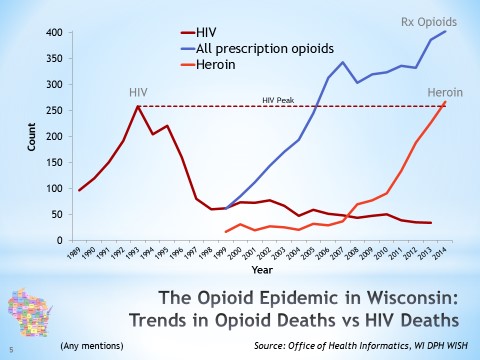
Like other opioids, heroin induces euphoria and minimizes the perception of pain. Further side effects of heroin use typically include drowsiness, nausea, itchy skin, disorientation, slow and shallow breathing, and dry mouth.
Moreover, when people inject heroine, they are at risk of acquiring and transmitting serious, long-term viral infections, such as hepatitis C and HIV. The risk of death from using heron is substantially higher than that of prescription opioid abuse.
From 2001 to 2007, heroin death counts in Wisconsin were consistent, averaging 27 per year. From 2008 to 2014, however, annual heroin deaths nearly quadrupled, from 70 to 267.
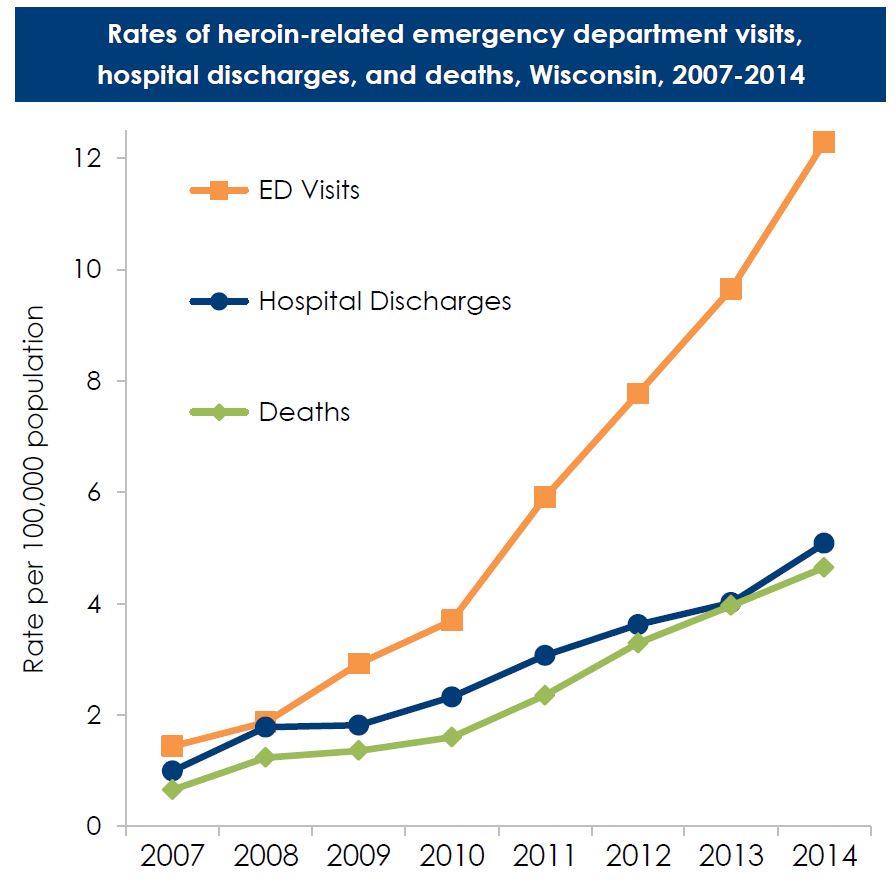
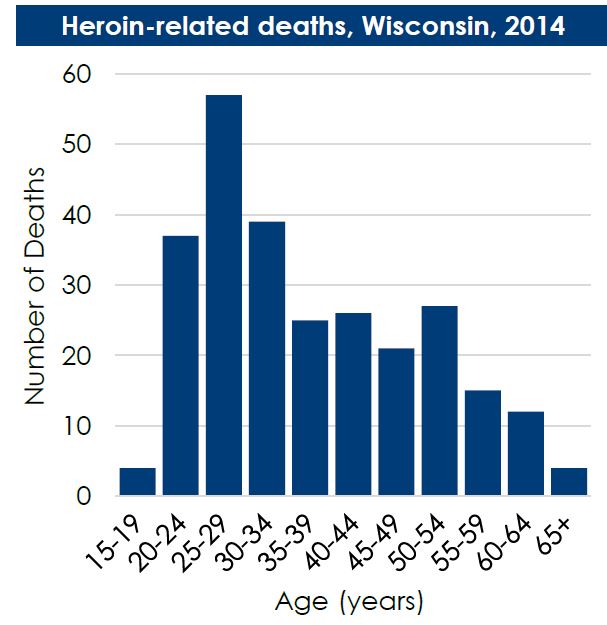
75% of Wisconsin residents who died from heroin overdose in 2014 were male, while 80% were white, and 67% had no more than a high school diploma. The median age was 34 years old, and the vast majority (87%) were unmarried. The most common overdose locations were homes (88%), hotels (6%), and vehicles (2%).
Despite accounting for over a quarter of the state's population, Milwaukee and Dane counties were home to nearly half (48%) of all decedents.
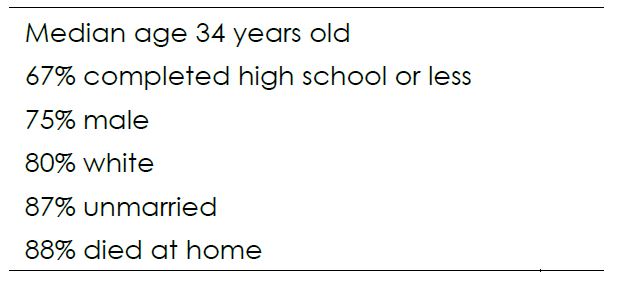
From 2013 to 2014, heroin overdose deaths increased 18% across the state. Although robust research in this area is limited, the causes of this surge may include:
- Rising use and misuse of opioid pain relievers
- Falling price and improved distribution of heroin
- Shifts in the demographics of heroin users
- Rising availability of pure heroin which reduced the need for injection
Oxycodone, hydrocodone, methadone, and other prescription opioids contributed to 382 (45 percent) of the 834 drug overdose deaths in 2013, while heroin contributed to 226 (27 percent) of the deaths. Some drug poisoning death records include more than one type of drug.
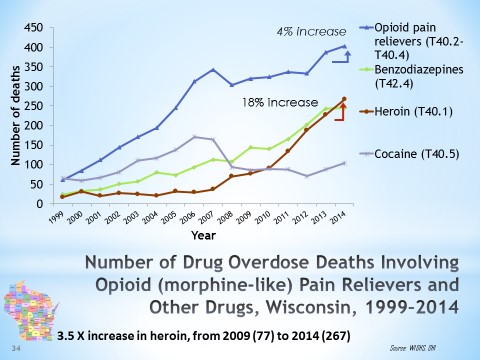
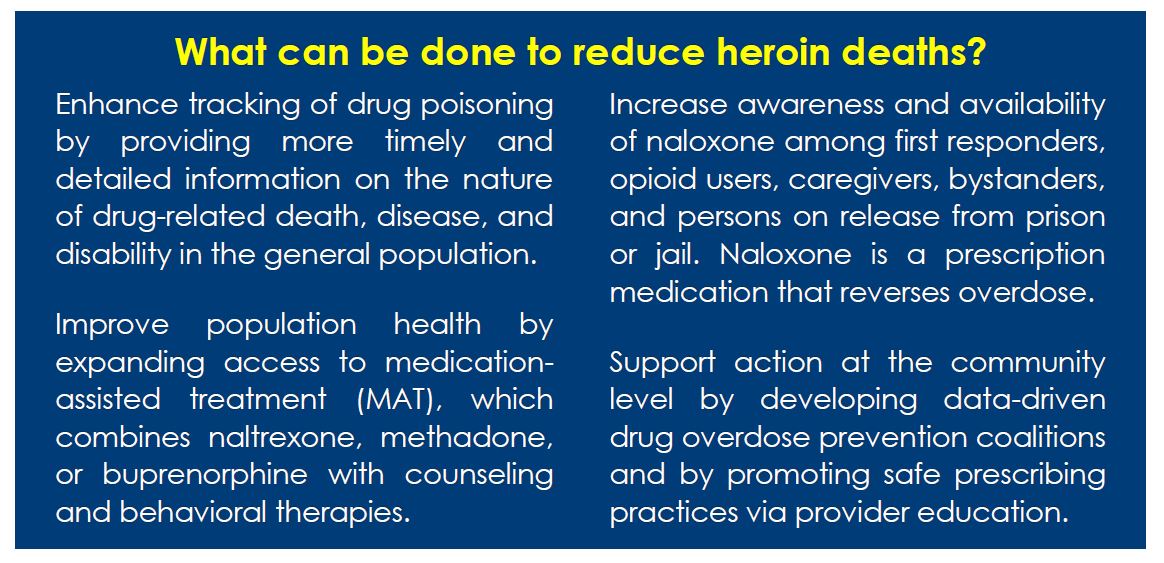
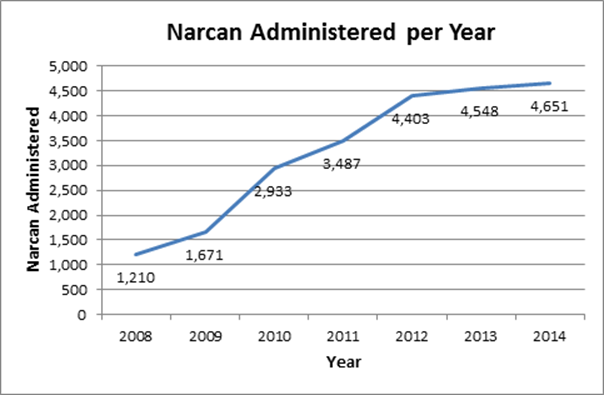
Narcan is a prescription medicine that blocks the effects of opioids and reverses an overdose. With legislation passed this session, Wisconsin has now made Narcan more readily accessible in pharmacies, without a prescription needed. Narcan is a lifesaving drug that is used by first responders to reverse the effects of an overdose.
